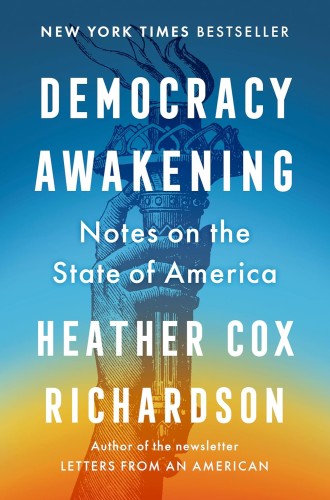Connecting the dots
Heather Cox Richardson guides us through serial attempts to overturn the liberal consensus in America.

Democracy Awakening
Notes on the State of America
As the United States—together with much of the world—teeters on the precipice of authoritarianism, a bit of historical context can’t hurt. Democracy Awakening provides some context leavened with a dash of hope that we can still, somehow, reverse course.
Heather Cox Richardson, a historian at Boston College and author of the popular Letters from an American newsletter, guides us through serial attempts to overturn the liberal consensus—a general acceptance of New Deal programs and modest business regulation—from the 1930s to the present. The Supreme Court’s Brown decision in 1954, she contends, “tied the active federal government not just to economic equality for white Americans but also to civil rights.” Opponents screamed “socialism” and adopted the mythological American cowboy as their totem; by 1959, the television schedule was populated by 26 westerns, including Bonanza, “a male world of hardworking cowboys protecting their land from evildoers.”
Those laboring to roll back the liberal consensus also sought ideological ballast. William F. Buckley Jr., a defender of Joseph McCarthy, asserted that American universities peddled “secularism and collectivism,” ideas inimical to free enterprise and religion. Southern opposition to the Civil Rights Act of 1964 and the Voting Rights Act of 1965 fed into the “southern strategy,” which helped elect Richard Nixon in 1968. “The administration’s strategy of polarizing the country to pick up voters,” Richardson writes, “began to shatter the liberal consensus.”




